| Origin | Ischial spine |
| Insertion | Medial surface of the greater trochanter |
| Action | Lateral rotation of hip Assists with abduction when hip is flexed |
| Nerve | Primarily the nerve to obturator internus (L5, S1) Additionally the nerve to the quadratus femoris (S4, S5) in some individuals |
| Artery | Inferior gluteal artery |
Location & Overview
The superior gemellus is one of two gemellus muscles, the other being the inferior gemellus. It is located superior to (above) the inferior gemellus and sits just inferior to (below) the piriformis muscle. Together, the gemellus muscles are termed the gemelli muscles and are two of the six external rotator muscles in the gluteal region. The six external rotator muscles are: superior gemellus, inferior gemellus, obturator externus, obturator internus, quadratus femoris, and piriformis. The superior gemellus has a close association with the obturator internus, as they are next to each other and connect via a conjoined tendon. The muscle combination of the superior gemellus, inferior gemellus, and obturator internus is occasionally referred to as the ‘triceps coxae’ [1] [2].

Pictured here we can see the superior gemellus muscle, seen from a posterior view.

Pictured here are the deep six hip external rotator muscles: the piriformis, gemellus superior, gemellus inferior, obturator internus, obturator externus, and quadratus femoris. These muscles play an important role in stabilising the hip joint and facilitating hip lateral rotation.
Origin & Insertion
The superior gemellus originates at the ischial spine, a pointed bony projection on the posterior part of the ischium situated between the greater and lesser sciatic notches in the pelvis. The muscle inserts on the medial surface of the greater trochanter, a prominent bony projection located at the upper part of the femur [3] [4].

Here we can see the origin of the superior gemellus marked in red on the ischial spine.
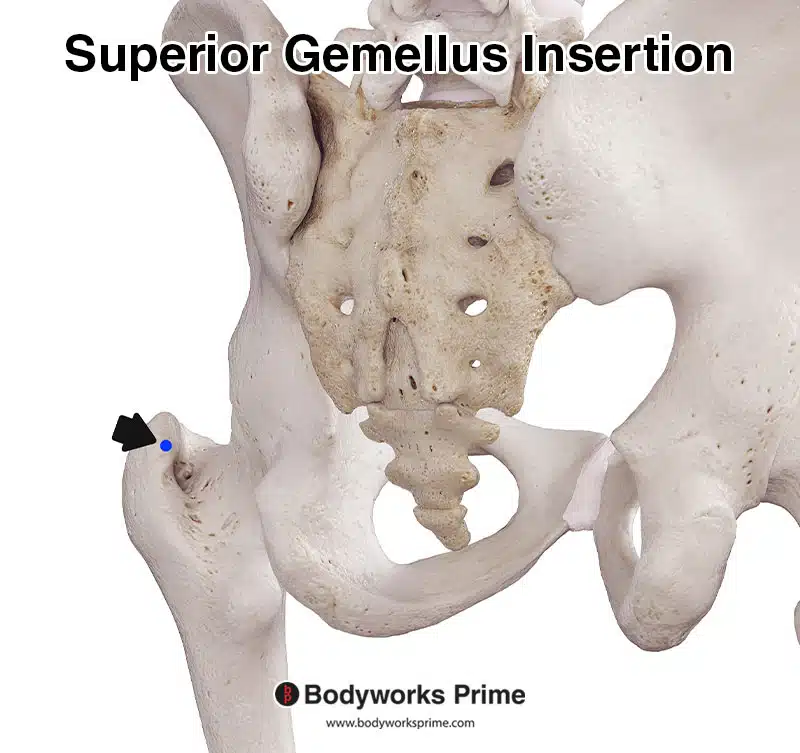
Here we can see the insertion of the superior gemellus marked in blue on the medial surface of the greater trochanter.
Actions
The primary action of the superior gemellus is lateral (external) rotation of the hip joint. When the hip is flexed, it can also assist with abduction of the hip. However, it is worth noting that the abduction force that the gemelli muscles can provide is significantly weaker compared to larger muscles, such as the gluteal muscles [5] [6].
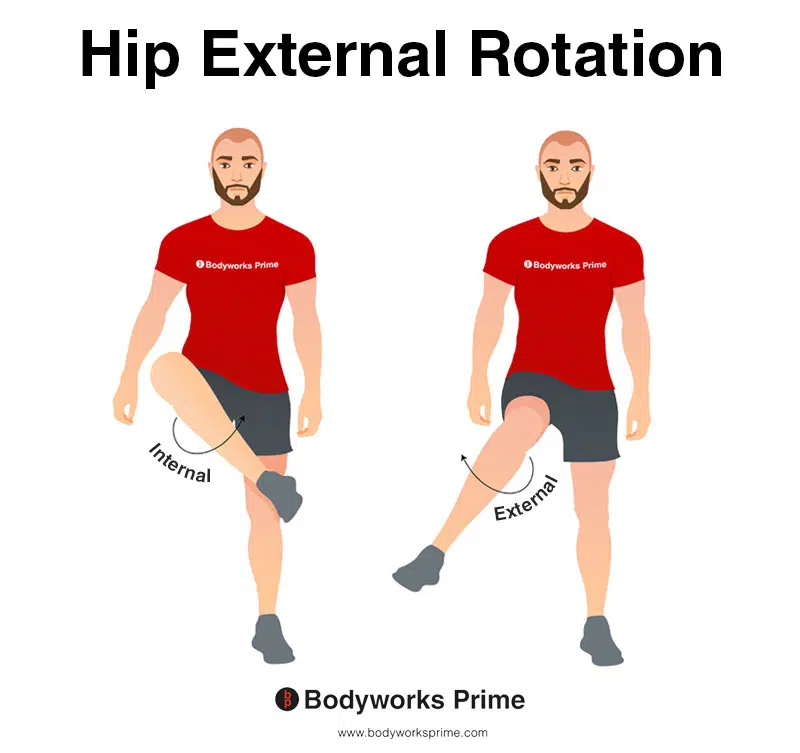
This image shows an example of hip external rotation, which involves rotating the leg from the hip joint outwards (laterally). External rotation is also referred to as lateral rotation. The opposite of external rotation is internal rotation (medial rotation). External rotation of the hip joint is the primary action of the superior gemellus.
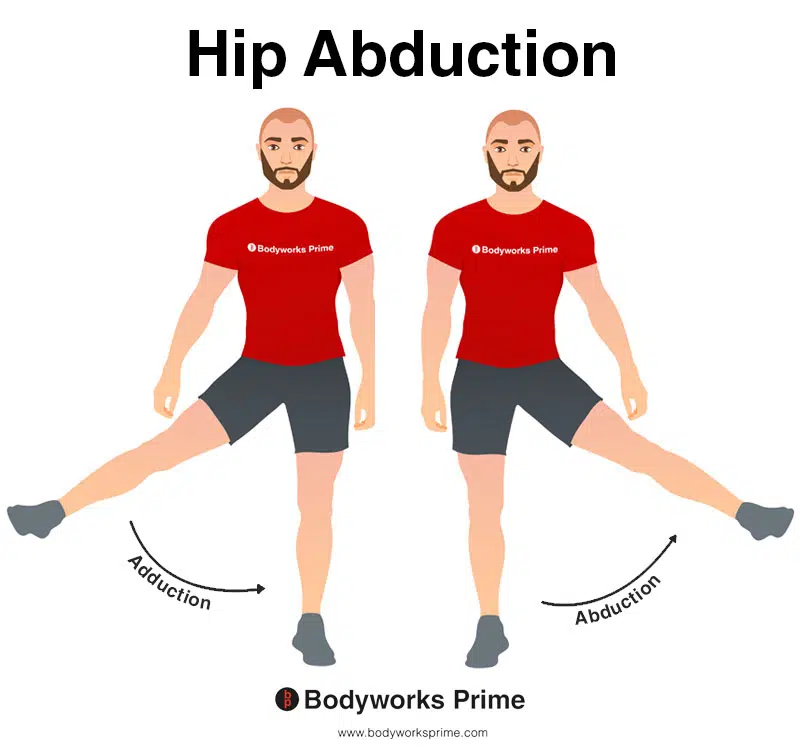
This image shows an example of hip abduction, which involves moving the leg out to the side (laterally). The opposite of hip abduction is hip adduction. The superior gemellus can weakly assist with hip abduction, but only when the hip is flexed.
Innervation
The superior gemellus is innervated by the nerve to obturator internus, which has its spinal roots in L5 and S1. Notably, this is the same nerve supply as that of the obturator internus muscle [7] [8].
However, there is some variability in this innervation. In a study conducted by Htar Htar Aung et al. (2001), it was shown that the superior gemellus muscle received dual innervation from both the nerve to the obturator internus and the nerve to the quadratus femoris approximately 60.4% of the time. Htar Htar Aung et al. (2001) also confirmed that these two nerves are distinct, as they follow different pathways and do not communicate with each other [9].
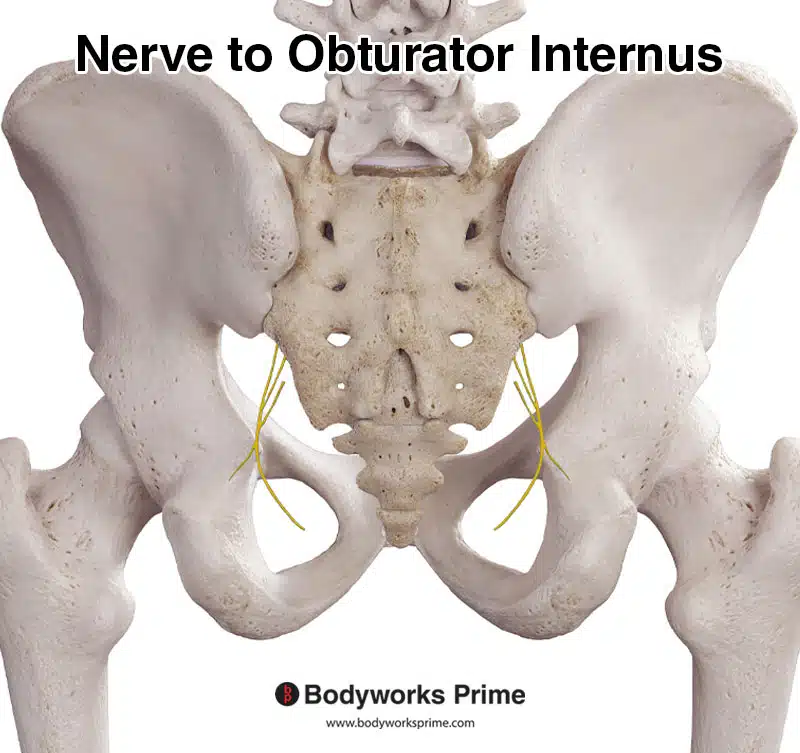
This image shows the nerve to the obturator internus which innervates the obturator internus the superior gemellus muscle.
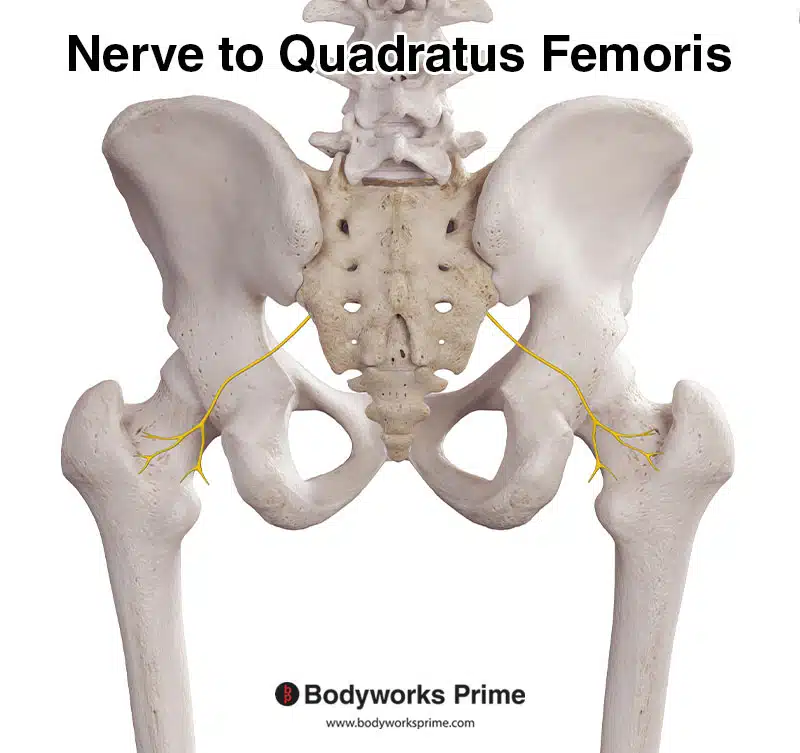
This image shows the nerve to the quadratus femoris, which, in combination with the nerve to the obturator internus, innervates the superior gemellus muscle in about 60.4% of cases.
Blood Supply
Blood supply to the superior gemellus muscle is provided by the inferior gluteal artery. This artery originates from the anterior trunk of the internal iliac artery. It then courses between the second and third sacral segments of the sacral plexus, exiting the pelvis through the greater sciatic foramen below the piriformis muscle. Upon entering the gluteal region, it supplies the gemelli muscles, among others, with essential oxygen and nutrients [10].
Want some flashcards to help you remember this information? Then click the link below:
Superior Gemellus Flashcards
Support Bodyworks Prime
Running a website and YouTube channel can be expensive. Your donation helps support the creation of more content for my website and YouTube channel. All donation proceeds go towards covering expenses only. Every contribution, big or small, makes a difference!
References
| ↑1, ↑3, ↑5, ↑7 | Dalley AF II, Agur AMR. Moore’s Clinically Oriented Anatomy. 9th ed. Wolters Kluwer Health; 2022. |
|---|---|
| ↑2, ↑4, ↑6, ↑8, ↑10 | Lezak B, Massel DH. Anatomy, Bony Pelvis and Lower Limb, Gemelli Muscles. [Updated 2022 Aug 29]. In: StatPearls [Internet]. Treasure Island (FL): StatPearls Publishing; 2023 Jan-. Available from: https://www.ncbi.nlm.nih.gov/books/NBK557420/ |
| ↑9 | Aung HH, Sakamoto H, Akita K, Sato T. Anatomical study of the obturator internus, gemelli and quadratus femoris muscles with special reference to their innervation. Anat Rec. 2001 May 1;263(1):41-52. doi: 10.1002/ar.1075. PMID: 11331970. |










